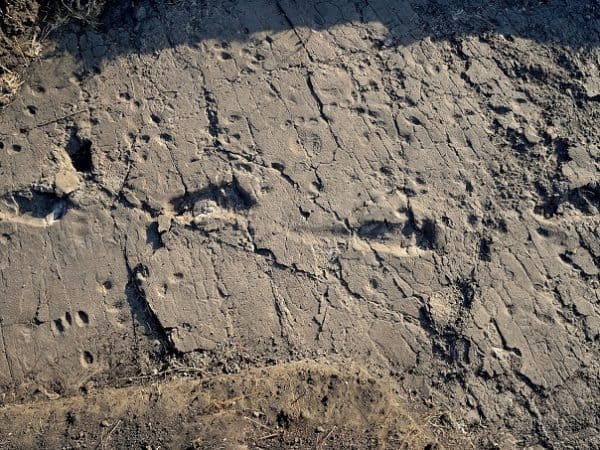
 Palaeontologists have located more footprints at the well-known Laetoli site in northern Tanzania, these ones belonging to a quite tall for its time pre-human individual who walked the earth some 3.7 million years ago.
Palaeontologists have located more footprints at the well-known Laetoli site in northern Tanzania, these ones belonging to a quite tall for its time pre-human individual who walked the earth some 3.7 million years ago.
In a new study published in the journal eLife, researchers detail a set of 13 footprints left in volcanic ash that had hardened into rock, found a mere 150 metres from the site of the celebrated discovery in the 1970s of another set of footprints from a member of Australopithecus afarensis that represented the earliest direct evidence of human ancestors that walked upright.
The footprints in Tanzania are being credited to a creature designated S1 after the Site S in which they were found. By estimate, S1 was about 5-foot-5 (165 centimetres) and weighed 100 pounds (about 45 kilograms). Likely, he was male and, due to his size, top dog over his fellow compatriots, say the study’s authors. “The stature estimates for S1 greatly exceed those previously reconstructed for Au. afarensis from both skeletal material and footprint data,” say the study’s authors, an international team of researchers led by Fidelis T Masao of the University of Dar es Salaam in Tanzania.
Masao and colleagues say that S1’s relatively large frame indicates that male and female hominins of that period may have differed substantially in size and had dominant males ruling over whole groups, much like the social arrangement we see in modern-day gorillas. “[We] tentatively suggest that the new footprints can be considered as a whole with the 1970s ones. The tall individual may have been the dominant male of a larger group, the others smaller females and juveniles,” say the study’s authors. “Thus, considerable differences may have existed between males and females in these remote human ancestors, similar to modern gorillas.”
About eight or nine million years ago, the Hominini line which would lead to humans split off from that of the Gorillini tribe, which produced today’s gorillas. Australopithecus afarensis, whose most famous representative is the partial skeleton named Lucy, are thought to have lived primarily in Eastern Africa between 2.9 and 3.9 million years ago. Homo sapiens, by contrast, have only been on the scene since about 200,000 years ago.
One of the richest collections of hominin fossils ever discovered was reported last year by palaeontologists working in a cave in South Africa. Researchers had to squeeze through a gap in long narrow chute within the Rising Star Cave in the Bloubank River Valley not far from Johannesburg. Once inside, the team found an amazing 1,550 fossil fragments from a previously unknown species of ancient human, which has since been named Homo naledi, after a local word for “star.”
Reportedly, the cave had been thoroughly explored over the past half-century but other cavers had missed checking out a small crevice which led down 12 metres to an open chamber containing the fossil remains.
The team of scientists used to recover the remains were all thin women with caving experience, not afraid of tight spaces and with a background in paleoanthropology. One of them was Marina Elliott who was finishing her PhD at Simon Fraser University in Vancouver, BC, at the time. Elliott stated that aside from the obvious physical challenges the work presented, the emotional intensity of recovering that much fossil history was daunting.
“There was so much material and it was friable and delicate. And every day, we realized that we were pulling out another 40 or 60 fragments of this thing that was going to be incredible,” says Elliott in conversation with The Atlantic.
Leave a Reply
You must be logged in to post a comment.



 Share
Share Tweet
Tweet Share
Share




Comment